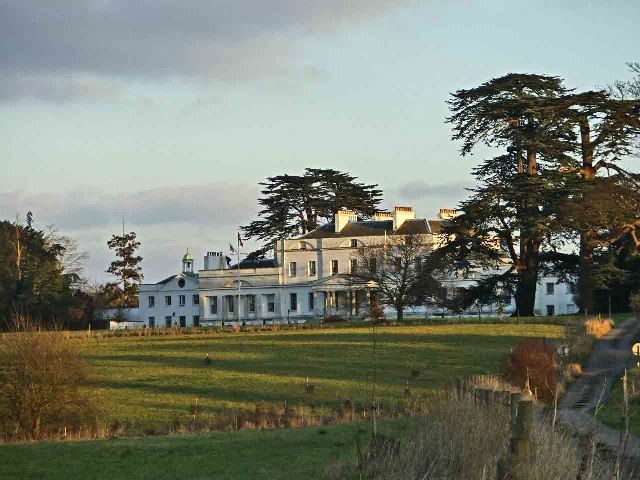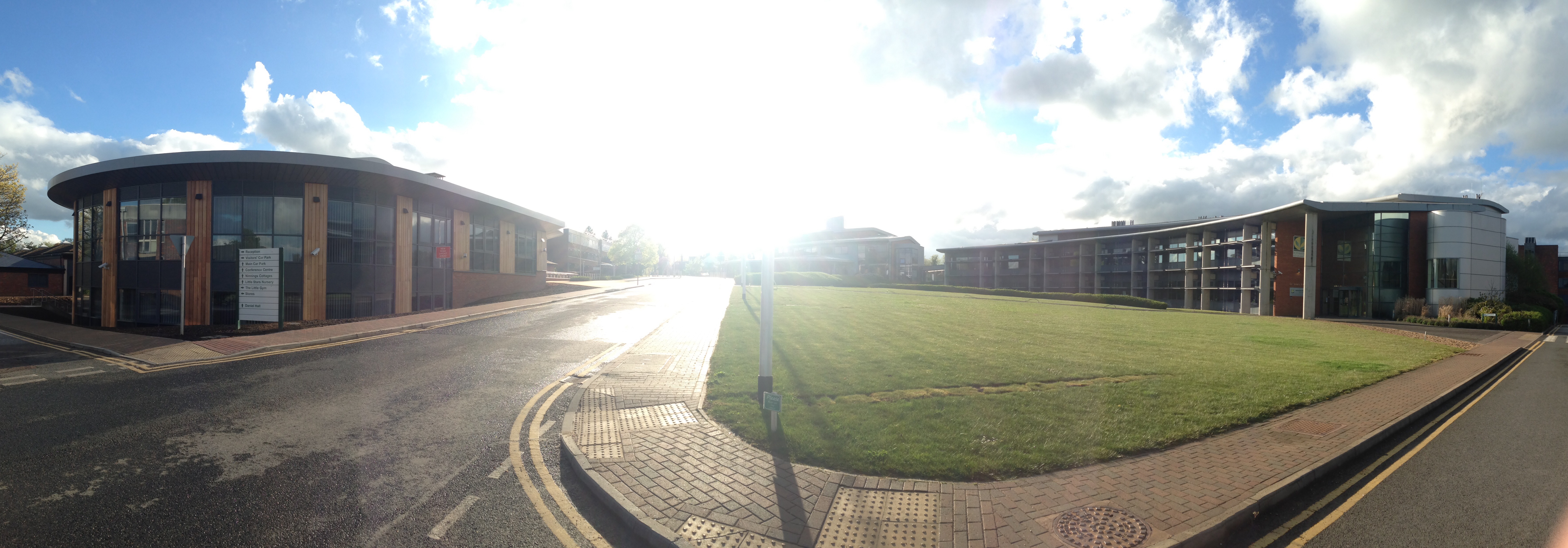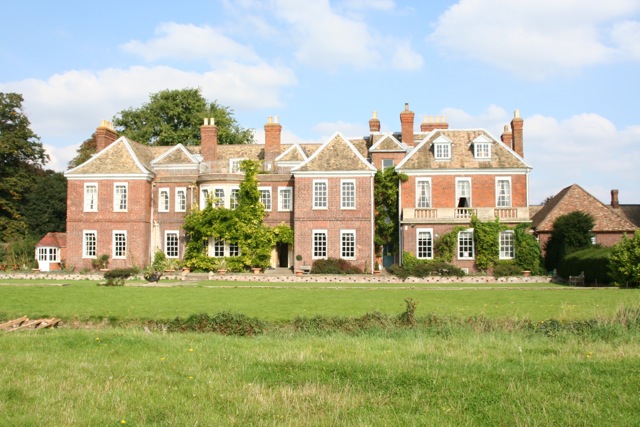|
John Innes Centre
The John Innes Centre (JIC), located in Norwich, Norfolk, England, is an independent centre for research and training in plant and microbial science founded in 1910. It is a registered charity (No 223852) grant-aided by the Biotechnology and Biological Sciences Research Council (BBSRC), the European Research Council (ERC) and the Bill and Melinda Gates Foundation and is a member of the Norwich Research Park. In 2017, the John Innes Centre was awarded a gold Athena SWAN Charter award for equality in the workplace. History The John Innes Horticultural Institution was founded in 1910 at Merton Park, Surrey (now London Borough of Merton), with funds bequeathed by John Innes, a merchant and philanthropist. The Institution occupied Innes's former estate at Merton Park until 1945 when it moved to Bayfordbury, Hertfordshire. It moved to its present site in 1967. [...More Info...] [...Related Items...] OR: [Wikipedia] [Google] [Baidu] |
Botany
Botany, also called , plant biology or phytology, is the science of plant life and a branch of biology. A botanist, plant scientist or phytologist is a scientist who specialises in this field. The term "botany" comes from the Ancient Greek word (''botanē'') meaning " pasture", " herbs" "grass", or " fodder"; is in turn derived from (), "to feed" or "to graze". Traditionally, botany has also included the study of fungi and algae by mycologists and phycologists respectively, with the study of these three groups of organisms remaining within the sphere of interest of the International Botanical Congress. Nowadays, botanists (in the strict sense) study approximately 410,000 species of land plants of which some 391,000 species are vascular plants (including approximately 369,000 species of flowering plants), and approximately 20,000 are bryophytes. Botany originated in prehistory as herbalism with the efforts of early humans to identify – and later cultivate – ed ... [...More Info...] [...Related Items...] OR: [Wikipedia] [Google] [Baidu] |
Bayfordbury
Bayfordbury, Hertfordshire, is a large Grade II* listed country house with surrounding parkland, and the location of a University of Hertfordshire campus, housing its biology/geography field station and observatory. History of Bayfordbury Bayfordbury House was originally built between 1759 and 1762 for well-to-do London merchant Sir William Baker. It was upgraded to its present appearance by his son, also William Baker between 1809 and 1812. After the death of Admiral Sir Lewis Clinton-Baker in 1940, the estate was leased to the Dr Barnardo's charity. The 372-acre Bayfordbury estate was then bought by the John Innes Centre in 1948 and developed into a School of Cytology. A new Cell Biology building was built in 1959, later to become the Science Learning Centre. In 1967 the John Innes Centre moved to its present site in Norwich and the Bayfordbury estate was bought by the Hertfordshire Council in 1967 for the use of Hatfield Polytechnic. Bayfordbury Observatory In 1969 the ... [...More Info...] [...Related Items...] OR: [Wikipedia] [Google] [Baidu] |
Institute Of Food Research
The Quadram Institute is a centre for food and health research, combining Quadram Institute Bioscience (formerly the Institute of Food Research), the Norfolk and Norwich University Hospitals’ endoscopy centre and aspects of the University of East Anglia’s Norwich Medical School and the Faculty of Science. It is located on the outskirts of Norwich, England, United Kingdom and is a member of the Norwich Research Park. The institute is housed in a purpose-built facility on the Norwich Research Park that opened in 2018. Its founding partners are Quadram Institute Bioscience, University of East Anglia, Norfolk and Norwich University Hospital and the Biotechnology and Biological Sciences Research Council. The institute combines research teams from the partners with a regional gastrointestinal endoscopy unit and a clinical trials facility. The first patients were treated in the endoscopy unit in December 2018. History The Institute of Food Research was created in 1968, spread ... [...More Info...] [...Related Items...] OR: [Wikipedia] [Google] [Baidu] |
Sainsbury Laboratory
The Sainsbury Laboratory (TSL) is a research institute located at the Norwich Research Park (NRP) in Norwich, Norfolk, England, that carries out fundamental biological research and technology development on aspects of plant disease, plant disease resistance and microbial symbiosis in plants. It was founded in 1987. Research Training TSL provides a training environment with the intention of preparing post-graduate students, post-doctoral scientists and early career project leaders to excel in their careers. This includes training from the expert technology groups in plant tissue culture and transformation, bioinformatics and computational biology, proteomics, and synthetic biology as well as mentoring from established scientists. Facilities TSL provides its researchers access to compute clusters, mass spectrometers, confocal high content screening microscopy and plant growth and transformation facilities. Technology development The four core technology teams of TSL develop ... [...More Info...] [...Related Items...] OR: [Wikipedia] [Google] [Baidu] |
University Of Bristol
, mottoeng = earningpromotes one's innate power (from Horace, ''Ode 4.4'') , established = 1595 – Merchant Venturers School1876 – University College, Bristol1909 – received royal charter , type = Public red brick research university , endowment = £91.3 million (2021) , budget = £752.0 million (2020–21) , chancellor = Paul Nurse , vice_chancellor = Professor Evelyn Welch , head_label = Visitor , head = Rt Hon. Penny Mordaunt MP , academic_staff = 3,385 (2020) , students = () , undergrad = () , postgrad = () , city = Bristol , country = England , coor = , campus = Urban , free_label = Students' Union , free = University of Bristol Union , colours = ... [...More Info...] [...Related Items...] OR: [Wikipedia] [Google] [Baidu] |
University Of Nottingham
The University of Nottingham is a public university, public research university in Nottingham, United Kingdom. It was founded as University College Nottingham in 1881, and was granted a royal charter in 1948. The University of Nottingham belongs to the research intensive Russell Group association. Nottingham's main campus (University Park Campus, Nottingham, University Park) with Jubilee Campus and teaching hospital (Queen's Medical Centre) are located within the City of Nottingham, with a number of smaller campuses and sites elsewhere in Nottinghamshire and Derbyshire. Outside the UK, the university has campuses in Semenyih, Malaysia, and Ningbo, China. Nottingham is organised into five constituent faculties, within which there are more than 50 schools, departments, institutes and research centres. Nottingham has about 45,500 students and 7,000 staff, and had an income of £694 million in 2020–21, of which £114.9 million was from research grants and contracts. The institution's ... [...More Info...] [...Related Items...] OR: [Wikipedia] [Google] [Baidu] |
National Institute Of Agricultural Botany
The National Institute of Agricultural Botany (NIAB) is a plant science research company based in Cambridge, UK. The NIAB group The NIAB group consists of: * NIAB * NIAB EMR - a horticultural and agricultural research institute at East Malling, Kent, with a specialism in fruit and clonally propagated crop production. Joined the NIAB Group in 2016. * NIAB CUF - a potato agronomy unit. Joined the NIAB Group in 2013. * NIAB TAG - the arable group that joined in 2009 * BCPC - promotes the use of science and technology in the understanding and application of effective, sustainable crop production. Acquired by NIAB in 2018. History NIAB was founded in 1919 by Sir Lawrence Weaver. The original Huntingdon Road headquarters building was opened in 1921, by King George V and Queen Mary. Regional centres NIAB operates 11 regional centres throughout England: * Cambridge * Morley (Norfolk) * East Malling (Kent) * Sutton Scotney (Hampshire) * Newton Abbot and Plumber Farm (Devo ... [...More Info...] [...Related Items...] OR: [Wikipedia] [Google] [Baidu] |
Rothamsted Research
Rothamsted Research, previously known as the Rothamsted Experimental Station and then the Institute of Arable Crops Research, is one of the oldest agricultural research institutions in the world, having been founded in 1843. It is located at Harpenden in the English county of Hertfordshire and is a registered charity under English law. One of the station's best known and longest-running experiments is the Park Grass Experiment, a biological study that started in 1856 and has been continuously monitored ever since. History The Rothamsted Experimental Station was founded in 1843 by John Bennet Lawes, a noted Victorian era entrepreneur and scientist who had founded one of the first artificial fertilizer manufacturing factories in 1842, on his 16th-century estate, Rothamsted Manor, to investigate the impact of inorganic and organic fertilizers on crop yield. Lawes had Henry King conduct studies on the application of bone dust to turnip fields between 1836 and 1838. In 1840 he h ... [...More Info...] [...Related Items...] OR: [Wikipedia] [Google] [Baidu] |
Biffen Lecture
The Biffen Lecture is a lectureship organised by the John Innes Centre The John Innes Centre (JIC), located in Norwich, Norfolk, England, is an independent centre for research and training in plant and microbial science founded in 1910. It is a registered charity (No 223852) grant-aided by the Biotechnology and ..., named after Rowland Biffen. Lecturers SourceJohn Innes Centre* 2001 John Doebley * 2002 Francesco Salamini * 2003 Steven D. Tanksley * 2004 Michael Freeling * 2006 Dick Flavell * 2008 Rob Martienssen – 'Propagating silent heterochromatin with RNA interference in plants and fission yeast' * 2009 Susan McCouch, Department of Plant Breeding & Genetics, Cornell University – 'Gene flow and genetic isolation during crop evolution' * 2010 Peter Langridge, University of Adelaide, Australia – 'Miserable but worth the trouble: Genomics, wheat and difficult environments' * 2012 Sarah Hake, Plant Gene Expression Center, USDA-ARS – 'Patterning the maize leaf' * ... [...More Info...] [...Related Items...] OR: [Wikipedia] [Google] [Baidu] |
Bateson Lecture
The Bateson Lecture is an annual genetics lecture held as a part of the John Innes Symposium since 1972, in honour of the first Director of the John Innes Centre, William Bateson. Past Lecturers SourceJohn Innes Centre * 1951 Sir Ronald Fisher - "''Statistical methods in Genetics''" * 1953 Julian Huxley - "''Polymorphic variation: a problem in genetical natural history''" * 1955 Sidney C. Harland - "''Plant breeding: present position and future perspective''" * 1957 J.B.S. Haldane - "''The theory of evolution before and after Bateson''" * 1959 Kenneth Mather - "''Genetics Pure and Applied''" * 1972 William Hayes - "''Molecular genetics in retrospect''" * 1974 Guido Pontecorvo - "''Alternatives to sex: genetics by means of somatic cells''" * 1976 Max F. Perutz - "''Mechanism of respiratory haemoglobin''" * 1979 J. Heslop-Harrison - "''The forgotten generation: some thoughts on the genetics and physiology of Angiosperm Gametophytes'' " * 1982 Sydney Brenner - "''Molecular geneti ... [...More Info...] [...Related Items...] OR: [Wikipedia] [Google] [Baidu] |
Postdoctoral Researcher
A postdoctoral fellow, postdoctoral researcher, or simply postdoc, is a person professionally conducting research after the completion of their doctoral studies (typically a PhD). The ultimate goal of a postdoctoral research position is to pursue additional research, training, or teaching in order to have better skills to pursue a career in academia, research, or any other field. Postdocs often, but not always, have a temporary academic appointment, sometimes in preparation for an academic faculty position. They continue their studies or carry out research and further increase expertise in a specialist subject, including integrating a team and acquiring novel skills and research methods. Postdoctoral research is often considered essential while advancing the scholarly mission of the host institution; it is expected to produce relevant publications in peer-reviewed academic journals or conferences. In some countries, postdoctoral research may lead to further formal qualificati ... [...More Info...] [...Related Items...] OR: [Wikipedia] [Google] [Baidu] |
Trumpington, Cambridgeshire
Trumpington is a village and parish to the south of Cambridge, England. The village is an electoral ward of the City of Cambridge and a ward of South Cambridgeshire District Council. The 2011 Census recorded the ward's population as 8,034. The village was a separate parish from the Anglo-Saxon era until the 20th century. In 1912 all of the land north of Long Road was transferred to Cambridge, and in 1934 most of the remaining land, including all of the village, was also given over to Cambridge. Only , almost uninhabited, were transferred to Haslingfield parish. The Cambridge Local Plan 2006 took land around the village out of the green belt and paved the way for an urban extension due for completion in 2023. A map of the enlarge village is available in ''The Trumpet'', a community magazine produced by the parish church. Archaeology There is evidence of Iron Age and Roman settlements in Trumpington, near the River Cam ford by the road to Grantchester, and a Roman cemetery. An ... [...More Info...] [...Related Items...] OR: [Wikipedia] [Google] [Baidu] |





